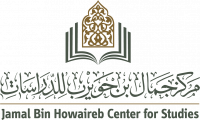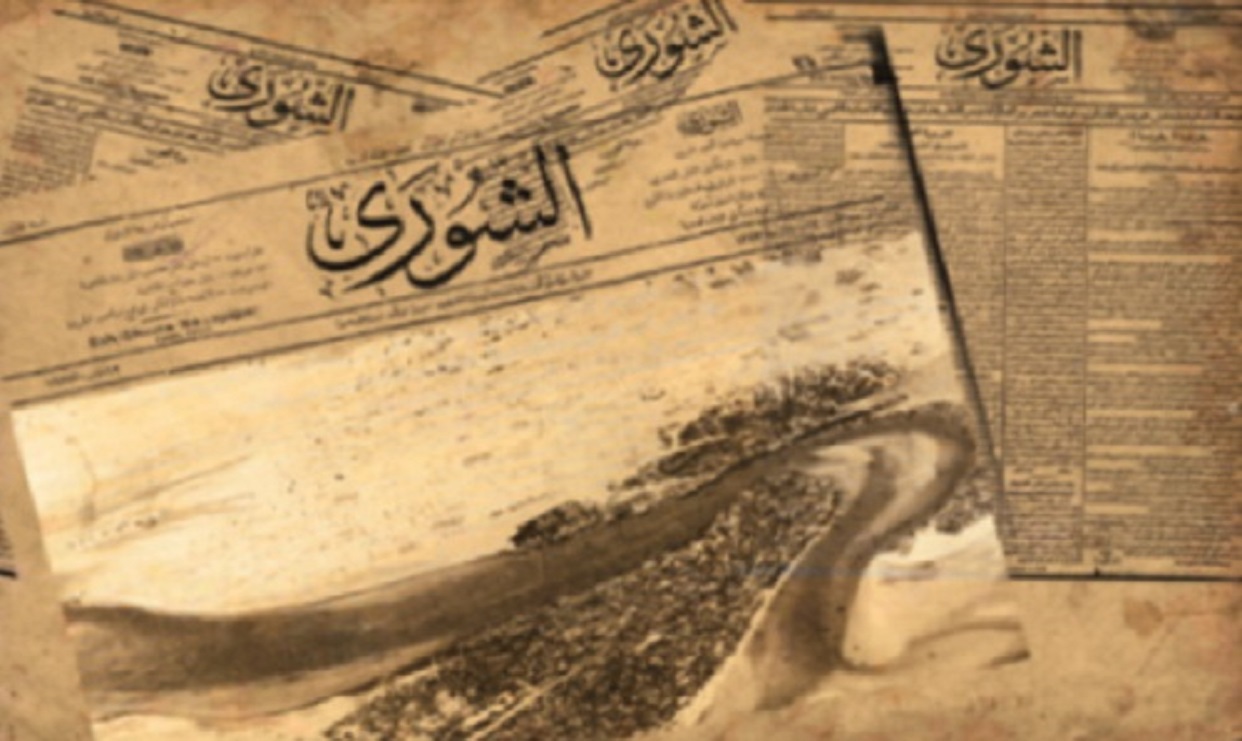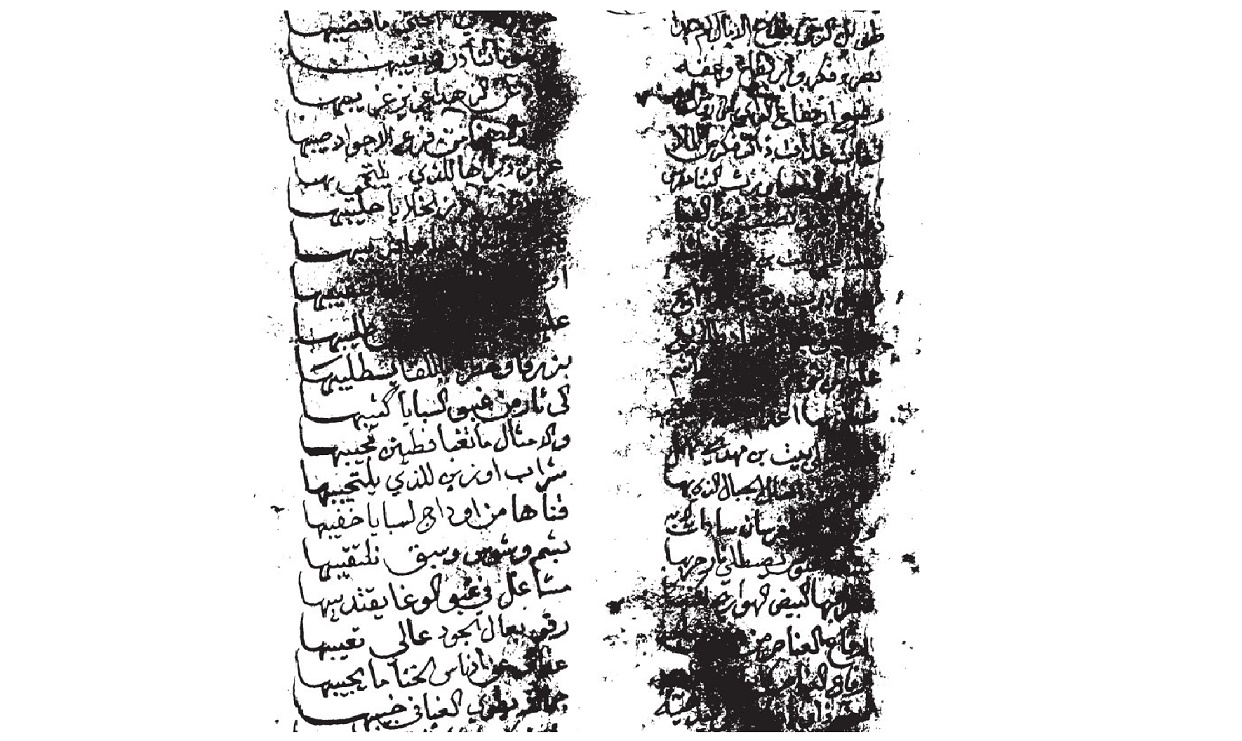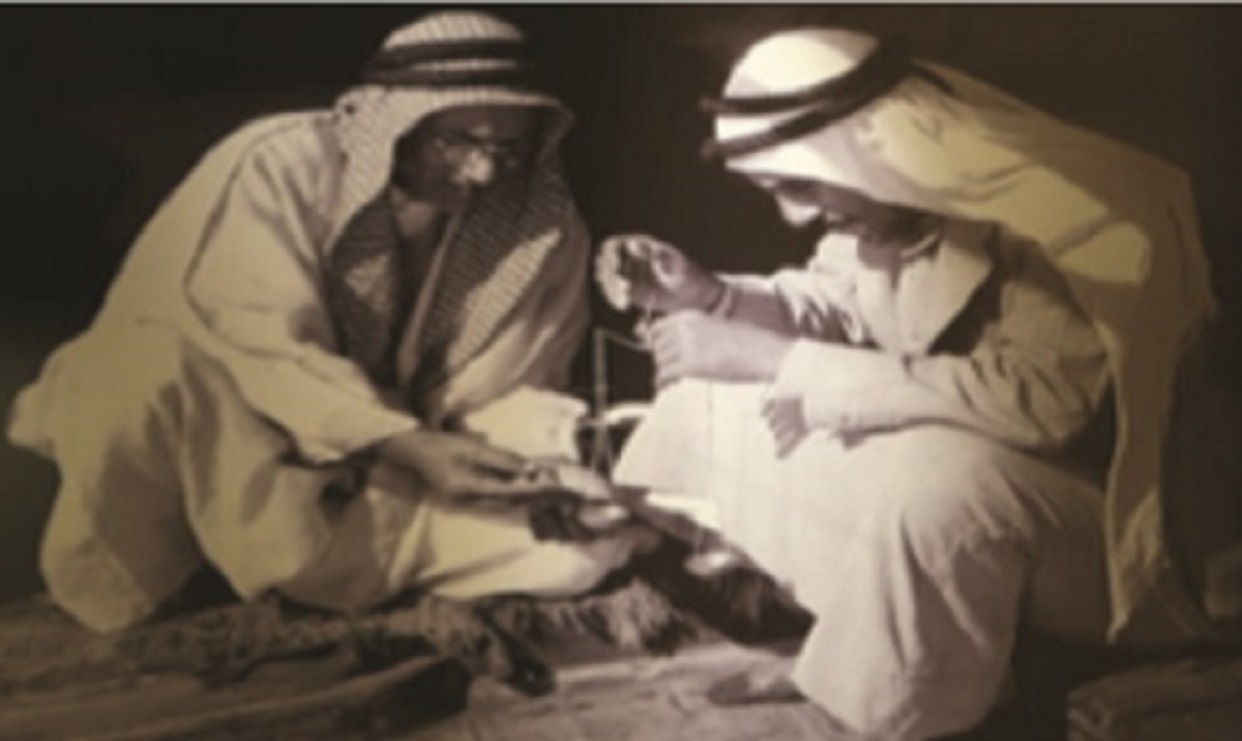1,077 عدد المشاهدات
Qassim bin Khalaf Al Ruwais – Saudi Researcher
Al Shoura is one of the newspapers that gained prominence owing to its emergence in a critical political period of modern Arab history. The fame and reputation of Al Shoura soared due to the courageous approach it adopted to defend the rights of Arabs and Muslims, refute the actions of colonists, and refuse submission to bargaining chip and backed up writers.

In Cairo, Al Shoura newspaper was established by Arabic Palestinian writer and freedom fighter Mohammed Ali Al-Tahir (1896-1974). Al Shoura published periodicals for seven years starting from 1343 AH / 1924 AD until it ceased in 1350 AH / 1931 AD. It issued 335 publications, and was a field for Arab greatest writers at that time.
Al Shoura possessed a great deal of important news and information about the Gulf countries in general, including the Trucial States, which later formed the United Arab Emirates. Dating back to 40 years prior to the Federation, this news was of great historical importance and scientific significance for researchers in the history of the UAE.
Dubai was the first Emirate of the UAE to be mentioned in Al Shoura newspaper in its 38th issue on July 16, 1925, (24/12/1343 AH) when the Tunisian leader Abdelaziz Al Thâalbi visited Dubai during his tour through the Gulf in the afternoon of Friday, June 23, 1925. Writer Ahmed bin Sultan bin Sulayem, the newspaper reporter in Dubai at the time, covered the details of the visit of Al Thâalbi, especially the concert held by the Ahmadiyya School to honor the guest. The visit was published on the fourth and fifth pages of the newspaper.

UAE Events
Al Shoura newspaper published the last news concerning the UAE in its final periodical, which bears the number 335 on Rabi I 21,1350 AH (August 5, 1931). This periodical included the details of the death of Abdulrahman bin Saif, Governor of Al-Hamriya published on the third page of the newspaper. The news sources came from Dubai, probably covered by its reporter.
Between issue 38 and issue 335, over a seven year period, Al Shoura newspaper published a total of 64 press materials on the events of the UAE; its relations and men, which were distributed according to the years of publication between 1925 and 1931.
Al Shoura news sources and outlets were also varied, although they often came from its correspondents in Dubai and Muscat. However, Al Shoura also had news correspondents providing it with news in Bahrain, Bandar Abbas, Basra, Amman and Bombay. It also covered some news from Indian, Egyptian and Iranian newspapers as well as readers’ correspondence. Periodicals can be distributed according to sources (in the following table:)
Most of the articles – about 70% in total – focused on the political aspects due to the continuing unrest in that period, on the part of Oman or the English or within the UAE or between them.
While the rest of articles dealt with the cultural, social and economic aspects. One way or another, more than 50% of these materials were related to the Emirate of Dubai. Since the beginning of the twentieth century Dubai has become an active commercial port for Arabs, Persians, Indians and others. In addition to the presence of educated elites, among which was Al Shoura correspondent, who were in constant contact with the outside world through sending materials to the press about the conditions of Dubai.
Therefore, we will highlight something about the Emirate of Dubai on the pages of Al Shoura, which defined Dubai in its 38th issue in 1925 “A town on the coast of Oman .. Today it is more prosperous than other towns in its development, civilization and intangible and financial power. The adherence of UAE people to Arab nationalism and their ability to build wealth through pearl trade, delights all Arabs and people of the Orient”. News about Dubai in Al Shoura can be summarized in a number of elements
Monitoring the political and economic situations
1925 was a pivotal point in the political relations with Britain. After the Iranian coup d’état and inauguration of Reza Pahlavi Shah of Iran, the British government decided to change the airway between London and the Indian peninsula from the Persian coast to the Arabian coast. This increased Britain’s strategic and economic interests with the Trucial States, which were independent in their internal affairs. The British government had to get the approval of the rulers of the United Arab Emirates to establish the necessary ground installations, which was not easy due to opposition of the rulers and the people who feared the colonial influence in their country.
Britain used its dominant power to threaten the rulers exercising pressure on them to agree. This period was not without internal disputes and conflicts between the Emirates or within the same Emirate. One way or another, the intensive British presence, during this period, has played a significant role in intervening in these internal disputes in order to preserve its strategic interests in the region. This period also witnessed frequent display of British power under the different pretexts including eliminating the arms trade and the slave trade.
In terms of economic activity, the Arab Emirates were dependent on one economic activity, the diving season and the significant revenues it generated. It was instrumental in activating the trade movement in the region by importing and exporting. The global demand for pearls in the Gulf reached its peak in 1925, where the revenues of pearl exports in Trucial States, alone, were 10 million Indian rupees.
But in the late 1920s, the Japanese cultured pearl emerged as a rival to the natural Gulf pearls, leading to the collapse of the pearl price in the world markets. This coincided with a global economic crisis during the years 1929-1931, making the Gulf region suffer a major economic blow and leading to deterioration in people’s standard of living. God willing, this deterioration did not last long, as oil flowed in the region restoring flourish to economy.
The independence of Dubai and the resistance of its ruler to establish a British Consulate and a Telegraph Office in Dubai, were one of the news covered by Al Shoura newspaper in its 54th issue.
Al Shoura, in its 60th and 63th issues, referred to the solidarity of the Emirate of Abu Dhabi and the Emirate of Dubai with Oman and their formation of a military alliance in 1925 after the rumor of a tripartite agreement between the British and Sultan of Muscat and Ibn Saud to wage war against Oman. It also referred to the emergence of the call to the unity of Oman.

In addition, it pointed out to some disturbances within the UAE, and to the role of Sheikh Saeed bin Maktoum in the consolidation of security, such as the news published in 1925 in the 61st issue, of the attack by some aggressors from a tribe on a camel belonging to Bani Yas, where the ruler of Dubai dispatched a force led by his brother Hasher bin Maktoum to hunt down those aggressors despite the retrieval of the camel. In 234th issue, there is a reference to the details of some internal affairs in Dubai in 1929, while in 293th and 298th issues, the Al Shoura refuted the fabricated news published by an Iranian newspaper about the British attack on Dubai.
Documentation of visits of leaders and dignitaries
Among these visits, which were documented on the pages of Al Shoura newspaper, is the visit of the Tunisian leader Abdelaziz Al Thâalbi. Al Shoura newspaper in its 38th issue, dated July 16, 1925, covered Al Thâalbi’s visit to Dubai, who came from India through Muscat in June 1925. It described the reception of Al Thâalbi by Crown Prince of Dubai with his entourage in a private boat holding Dubai’s flag. Al Shoura described the reception of Al Thâalbi at the luxurious palace of the Crown Prince, in addition to his visit to the Ahmadiyya School where a concert was held to honor the guest, with its speeches and activities. The visit had a role on the introduction of the UAE to other newspapers; interviews were held with Al Thâalbi in some Arab newspapers in which he spoke about his observations. One of these interviews was published in Al Shoura newspaper in its 81th issue on May, 21, 1926.
Among these visits is the visit of Sohar governor, Mr. Hamad bin Faisal Al Busaidi. Al Shoura published in its 114th issue, dated January 13, 1927, the news of the arrival of the brother of Sultan Timur bin Faisal bin Turki al-Busaidi, Mr. Hamad bin Faisal, Sohar governor, accompanied by 170 of his entourage and soldiers to Dubai on Thursday, 19 Jumada I, 1345 AH. He was greeted with enthusiasm and welcomed by the ruler of Dubai Sheikh Saeed bin Maktoum, Sheikh Manie bin Rashid and a number of elders and dignitaries. On the third day of his visit, a ceremony was given to honor him at Ahmadiyya School, and his visit took seven days.

After more than three months of publishing the news about this visit, the special secretary of Sohar governor commented on it, stressing the superiority of Dubai over neighboring countries in trade and explaining the objectives of the governor’s visit.
Al Shoura also covered the visit of the founder of Al Falah Schools, Muhammad Ali Zainal, as it published in its 207th issue, on December 26, 1928, the details of the visit of this great Hejazi benevolent and famous pearl merchant, who arrived in Dubai from Bahrain on the morning of Thursday, 18 Jumada I 1347. He was received by Sheikh Juma bin Maktoum, Sheikh Manie bin Rashid and many of Dubai’s dignitaries and was hosted by Mohammed bin Ahmed bin Dalmuk.
On Saturday morning Zainal visited Al Sa’ada School where speeches were given to welcome and celebrate him. On the fourth day, Sheikh Sultan bin Saqr al-Qasimi, ruler of Sharjah, invited Zainal to Dubai, thus Zainal visited him and went back to Dubai. On Tuesday, 30 Jumada I, Al Falah School, which Zainal founded in Dubai, held for him a featured event, attended by the ruler of Dubai, Sheikh Saeed bin Maktoum, besides a large gathering of school children and the people of Dubai. On Thursday, 2 Jumada II, he boarded on a steamer called Broda leaving Dubai to Bombay, India.
Chronicling the Cultural Movement
We find in the folds of news published by Al Shoura during the period (1925-1931), useful references to researchers in the emergence of the scientific movement, indications of the general cultural situation in this Emirate and the beginning of literary renaissance at that time. For example, in its 38th issue, there is a reference to the establishment of Ahmadiyya School by Sheikh Mohammed bin Ahmed bin Dalmuk, which was visited by Al Thâalbi in 1925. In its 38th and 127th issues, there is a reference to the role of Sheikh Manie bin Rashid in the scientific renaissance in Dubai in general and in the establishment of this school in particular.
In its 38th issue, the paper published on 10 February 1927 an article under the title (A New Scientific Movement in Dubai) about people’s attention to the importance of science, which led to renaissance and progress. The paper also mentions the initiative of establishing a scientific school in Dubai, which was in the first place limited to teaching jurisprudence, Arabic language and preaching by a scholar of Al Ahsa. It also mentions that the owners turned it into a school similar to modern schools and brought in teachers from abroad, although there was an objection by fanatic people.
Perhaps the intended school was (Ahmadiyya School), while the article refers to the establishment of another school in Dubai other than this school that year. Perhaps this other school was (Al Sa’ada School) which was founded by trader Mohammed Al-Budour, Haj Youssef Al Serkal and Mohammed Abdullah Al-Yamani, as stated in 207th issue on 26 December 1928. The establishment of Al Sa’ada School seems to be close to the date of establishing Al Falah School in Dubai by the famous pearl merchant Muhammad Ali Zainal in 1928. However, we did not know through Al Shoura newspaper, whichever was earlier. We can say that these three schools were the core of modern formal education in the Emirate of Dubai.

Perhaps this interest in the press and the awareness of its role by the intellectuals of Dubai in that period made the British fear its political influence on people. For instance, we find in the 133th issue of Al Shoura news about banning all newspapers in Dubai and confiscating them in the Post Office, whether they were Egyptian, Syrian, Iraqi or from Mecca. However, Al Shoura in its 136th issue, denied the validity of this news based on what was written from Bombay. But we find the newspaper after two years, specifically in its 310th issue on January 28, 1931 confirm the banning of newspapers from entering Dubai and its abolishment thereafter.
The paper referred to the fear of reinstating the newspapers ban because of the confiscation of all articles issued from Dubai to newspapers. In its 319th issue, the paper published a statement from its correspondent in Bandar Abbas telling that there was no ban on newspapers entering Dubai at any time, rather there has been constriction that didn’t involve the articles written to newspapers. Whereas, in 335th issue, there is a reference to the threat of the expulsion of one of the teachers of Ahmadiyya School to Zubayr for sending materials to newspapers!
We also find on the pages of Al Shoura a documentation of some of the literary and artistic production of Dubai’s intellectuals in that period. Those intellectuals expressed their emotions and feelings in prose and poetry and published in the Arab press. For example, the writing of Abdullah bin Ali Al Sanie about the freedom fighters in the Moroccan countryside led by Abdelkrim al-Khattabi in the 50th issue, and his writing about the calamity of Damascus in the 80th issue. Other examples are: a suggestion that the newspapers should adhere to the Islamic calendar instead of the Gregorian calendar in the 83th issue, and the poem of Ahmed bin Sultan bin Sulayem praising Solomon Baroni Pasha, published in the 103th issue. In addition to his other poem in praising Mr. Hamad bin Faisal Al Busaidi in the 114th issue, and the poem of Salem Al Owais about Syria in the 133th issue.
We also find, in the paper, trips of Dubai’s intellectuals to abroad countries. There is no doubt that these trips had the impact of strengthening their relations, expanding their perceptions and acquisition of knowledge and mingling with other cultures, including the journey of Ahmed bin Sultan bin Sulayem to Bombay in 1927, his passage, on his way back, to Muscat, his visit to Samail to meet Soloman Pasha Baroni and his journey from Dubai to Bahrain in the same year. Al Shoura also published a story about the journey of Sheikh Manie bin Rashid to Bombay in 1927.
It can be said that a researcher in the history of the Gulf in general and in the history of the UAE in particular will find the press articles published in Al Shoura, helpful to bridge some of the gaps, analyze some incidents, find out about some conditions, and open up new possibilities for useful research and studies. These articles are more like an instantaneous historical record that includes news, references, attitudes and brief survey of some of the events that were taking place during the period (1925-1931).





